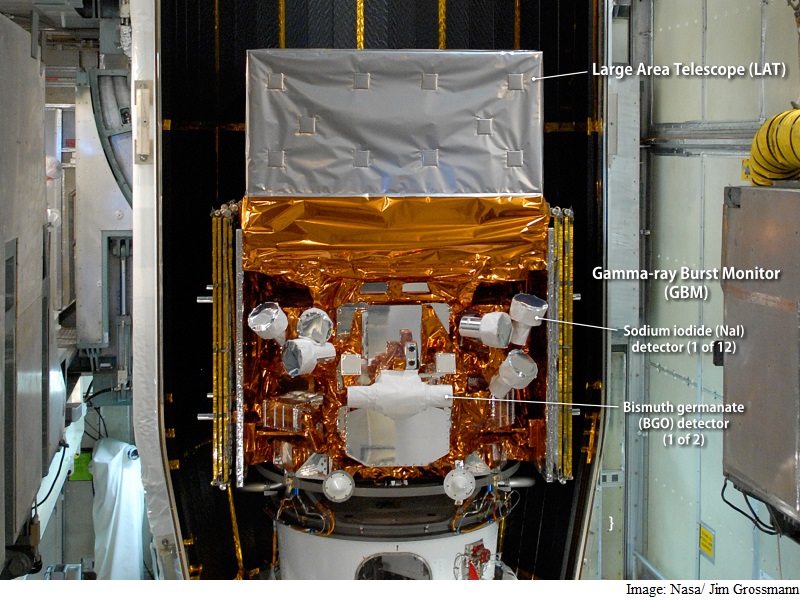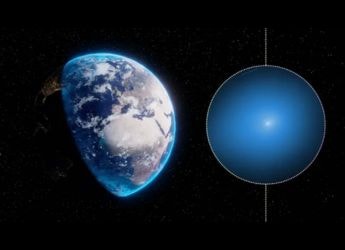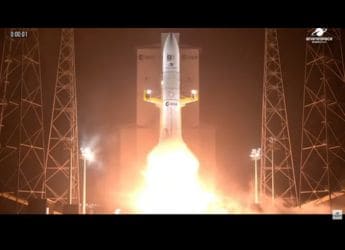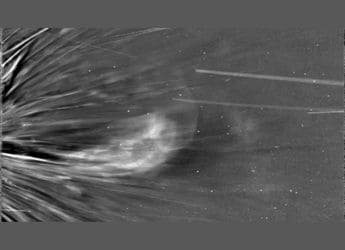- Home
- Science
- Science News
- Nasa's Fermi Telescope Set to Spot Gravitational Wave Sources
Nasa's Fermi Telescope Set to Spot Gravitational Wave Sources

Analysis of this burst suggests just a 0.2-percent chance of simply being random coincidence.
Gamma-rays arising from a black hole merger would be a landmark finding because black holes are expected to merge "cleanly," without producing any sort of light, the researchers noted.
"This is a tantalising discovery with a low chance of being a false alarm but before we can start rewriting the textbooks, we will need to see more bursts associated with gravitational waves from black hole mergers," said Valerie Connaughton, a GBM team member at the National Space, Science and Technology Center in Huntsville, Alabama.
On September 14, waves of energy travelling for more than a billion years gently rattled space-time in the vicinity of Earth.
The disturbance, produced by a pair of merging black holes, was captured by the Laser Interferometer Gravitational-Wave Observatory (LIGO) facilities in Hanford, Washington, and Livingston, Louisiana.
This event marked the first-ever detection of gravitational waves and opens a new scientific window on how the universe works.
As the two black holes near each other, they merge into a single black hole that settles into its "ringdown" phase where the final gravitational waves are emitted.
The GBM team calculates less than a 0.2-percent chance random fluctuations would have occurred in such close proximity to the merger.
"Detecting light from a gravitational wave source by Fermi will enable a much deeper understanding of the event," the authors stated.
Fermi's GBM sees the entire sky not blocked by Earth and is sensitive to X-rays and gamma rays with energies between 8,000 and 40 million electron volts (eV).
For comparison, the energy of visible light ranges between about 2 and 3 eV.
"With just one joint event, gamma rays and gravitational waves together will tell us exactly what causes a short GRB," added Lindy Blackburn, postdoctoral fellow at the Harvard-Smithsonian Center for Astrophysics in Cambridge, Massachusetts.
"There is an incredible synergy between the two observations, with gamma rays revealing details about the source's energetics and local environment and gravitational waves providing a unique probe of the dynamics leading up to the event," he explained in a paper under review by The Astrophysical Journal.
The LIGO event was produced by the merger of two relatively large black holes, each about 30 times the mass of the sun.
Binary systems with black holes this big were not expected to be common, and many questions remain about the nature and origin of the system.
Famous physicist Albert Einstein predicted the existence of gravitational waves in his general theory of relativity a century ago and scientists have been attempting to detect them for 50 years.
Get your daily dose of tech news, reviews, and insights, in under 80 characters on Gadgets 360 Turbo. Connect with fellow tech lovers on our Forum. Follow us on X, Facebook, WhatsApp, Threads and Google News for instant updates. Catch all the action on our YouTube channel.
Related Stories
- Samsung Galaxy Unpacked 2025
- ChatGPT
- Redmi Note 14 Pro+
- iPhone 16
- Apple Vision Pro
- Oneplus 12
- OnePlus Nord CE 3 Lite 5G
- iPhone 13
- Xiaomi 14 Pro
- Oppo Find N3
- Tecno Spark Go (2023)
- Realme V30
- Best Phones Under 25000
- Samsung Galaxy S24 Series
- Cryptocurrency
- iQoo 12
- Samsung Galaxy S24 Ultra
- Giottus
- Samsung Galaxy Z Flip 5
- Apple 'Scary Fast'
- Housefull 5
- GoPro Hero 12 Black Review
- Invincible Season 2
- JioGlass
- HD Ready TV
- Laptop Under 50000
- Smartwatch Under 10000
- Latest Mobile Phones
- Compare Phones
- OnePlus 15R
- Realme Narzo 90x 5G
- Realme Narzo 90 5G
- Vivo S50 Pro Mini
- Vivo S50
- OPPO Reno 15c
- Redmi Note 15 5G
- Redmi Note 15 Pro 5G
- Asus ProArt P16
- MacBook Pro 14-inch (M5, 2025)
- OnePlus Pad Go 2
- Poco Pad M1
- Just Corseca Skywatch Pro
- Honor Watch X5
- Acerpure Nitro Z Series 100-inch QLED TV
- Samsung 43 Inch LED Ultra HD (4K) Smart TV (UA43UE81AFULXL)
- Asus ROG Ally
- Nintendo Switch Lite
- Haier 1.6 Ton 5 Star Inverter Split AC (HSU19G-MZAID5BN-INV)
- Haier 1.6 Ton 5 Star Inverter Split AC (HSU19G-MZAIM5BN-INV)

















